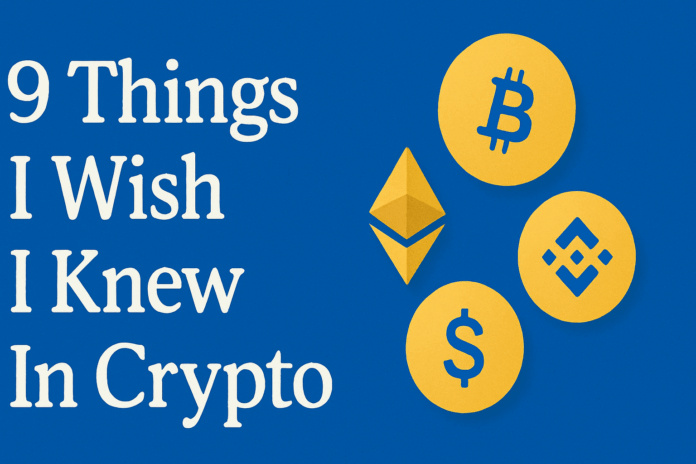Embarking on a cryptocurrency journey can be both exciting and overwhelming. The crypto space is bursting with opportunities, yet riddled with pitfalls that can trip up even the most enthusiastic newcomers. Reflecting on my own experience over the past five years, there are crucial lessons I wish someone had shared with me before I dove in. These insights come from hard-earned knowledge and real-world encounters, and they can save you time, money, and frustration.
Whether you’re just starting out or looking to deepen your understanding, this comprehensive guide covers the 9 Things I Wish I Knew In Crypto. Each lesson is designed to help you navigate the complex world of cryptocurrencies with confidence, avoid scams, manage risk, and make smarter investment decisions.
Table of Contents
- Lesson 1: Most Cryptocurrencies Are Scams
- Lesson 2: Many Popular Crypto Influencers Are Scammers
- Lesson 3: You Don’t Need to Buy a Bunch of Different Cryptos to Make Money
- Lesson 4: Take the Emotion Out of Investing
- Lesson 5: Market Sentiment Drives Prices, Not Fundamentals
- Lesson 6: Crypto Exchanges Do Not Have Your Best Interest
- Lesson 7: Operational Security Determines If You Keep or Lose Your Crypto
- Lesson 8: Crypto Is Littered with Fees
- Lesson 9: You Don’t Need to Understand Everything to Start
- Conclusion
- Frequently Asked Questions (FAQ)
Lesson 1: Most Cryptocurrencies Are Scams
When I first bought crypto five years ago, the landscape was much simpler—fewer tokens, clearer projects, and less hype. Fast forward to today, and there are more than twenty million tokens available, with new ones launching every second. But here’s the harsh truth: the vast majority of these tokens are scams.
Scammers have perfected a ruthless playbook. They launch a token, create hype using bots to fake trading volume and pump prices, attract unsuspecting investors, then dump their holdings and vanish with the profits. This cycle repeats endlessly, exploiting new entrants to the market.
One notorious platform fueling this phenomenon is pump.fun, which allows anyone with a few dollars to create and launch tokens on the Solana blockchain. Since January 2024 alone, over seven million tokens have been launched there, with 98% identified as scams according to Solidus Labs.
What makes a token a scam? Usually, these tokens lack liquidity — meaning they’re essentially untradeable. Only about 97,000 tokens out of millions have maintained liquidity above $1,000. If you don’t sell before the scammer exits, you’re left holding a worthless token.
The takeaway? Stick to established cryptocurrencies, like those listed in the top 100 on CoinMarketCap, especially if you’re a beginner. These projects have real backing, liquidity, and communities, reducing your risk of falling victim to a scam.
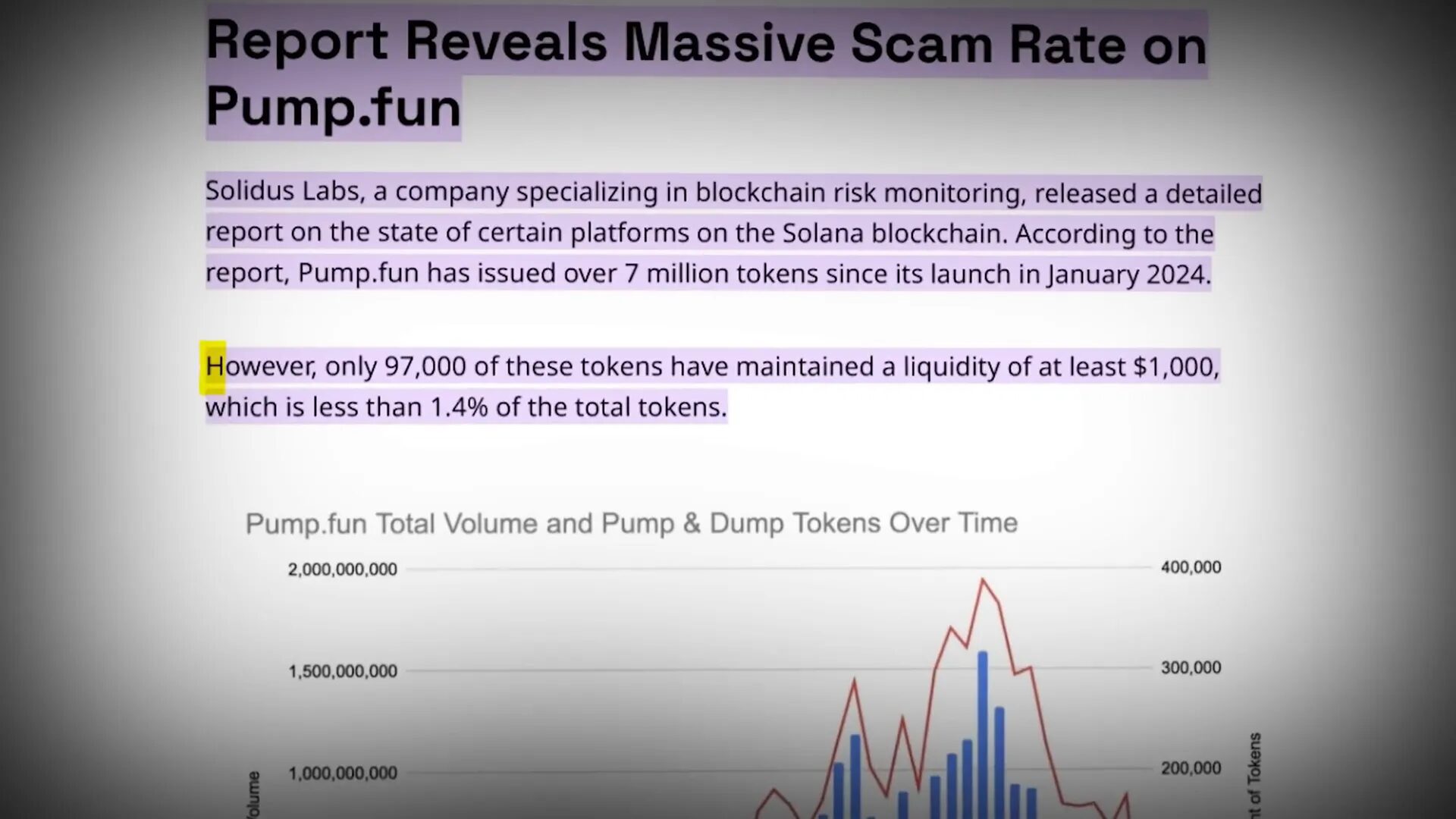
Lesson 2: Many Popular Crypto Influencers Are Scammers
Unfortunately, the problem extends beyond the tokens themselves. Many crypto influencers who appear trustworthy are actually promoting scams. Every day, I receive emails asking how much I charge to promote crypto projects. I’ve never entertained such offers, but many others have.
Be cautious about taking investment advice from influencers, especially if it involves newly launched tokens. They might be paid to shill projects and could be using their audience as exit liquidity.
Lesson 3: You Don’t Need to Buy a Bunch of Different Cryptos to Make Money
One of the biggest mistakes I made was chasing every new token I heard about, hoping to hit the jackpot. But spreading your investments too thin can dilute your gains and increase risk. Instead, focusing on established coins like Bitcoin, Ethereum, or Solana typically yields better, more consistent results.
There are really two main approaches to investing in crypto:
- The Gambling Approach: This is like playing slot machines in Vegas, but your odds are actually worse in crypto. This method involves hunting for newly launched tokens on platforms like Dexscreener or through crypto Twitter, hoping to buy early before the token explodes.
- The Reasonable Approach: Buying and holding established cryptocurrencies that already have strong communities, infrastructure, and adoption.
For example, when former President Trump launched his own meme token, over 500 people became crypto millionaires by getting in early. Sounds great, right? But for every winner, there were hundreds of thousands who lost money. Out of 764,000 crypto wallets involved in similar token launches, most ended up losing.
While the gambling method offers high potential rewards, it’s extremely risky. The safer path is to invest in top-tier coins, which may not make you a millionaire overnight but provide a more stable and less stressful investment experience.
Lesson 4: Take the Emotion Out of Investing
Emotions can be your worst enemy in crypto investing. Early on, I made the classic mistake of trying to time the market perfectly. I once had $400,000 in unrealized gains but held on too long, hoping for more. Eventually, the price dropped back down to where I started, wiping out my gains.
To avoid this, you need a systematic approach that removes emotion from your investment decisions. One effective method is Dollar Cost Averaging (DCA), where you invest a fixed amount regularly (weekly, biweekly, or monthly) instead of lump sums.
DCA not only helps you get better average entry prices but also reduces stress since you’re not constantly trying to “buy the dip” or “sell the top.”
Additionally, develop a solid profit-taking strategy. Here are three tactics I’ve used:
- Sell All at Once: Sell your entire position when the price hits your target. This is risky because you might miss out on higher gains if the price continues to rise.
- Sell in Increments: Take profits gradually as the price goes up. This balances risk and reward by locking in gains while still participating in potential upside.
- Recoup Initial Investment: Sell just enough to get back your initial investment, then let the rest ride for potential profits.
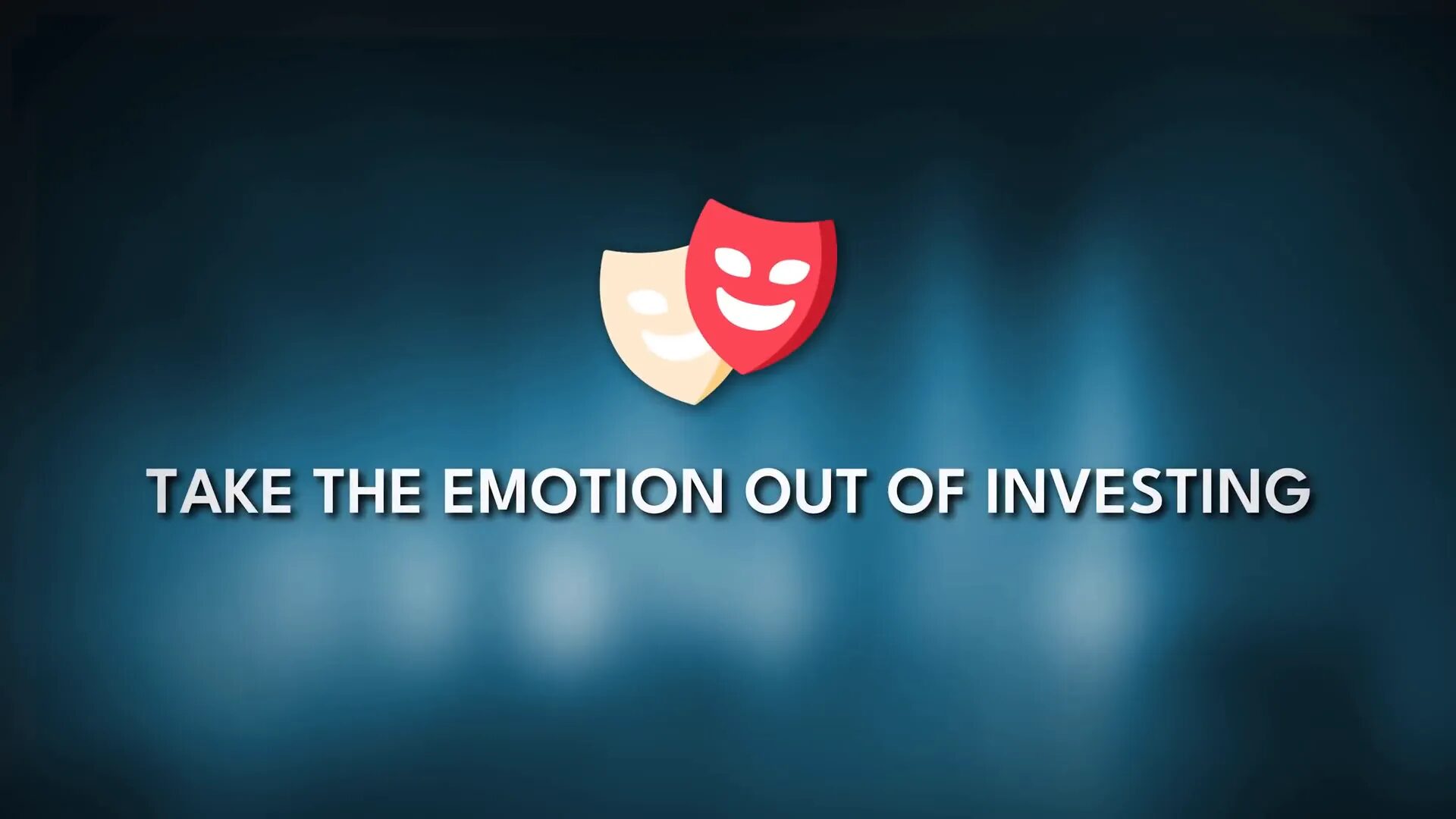
Lesson 5: Market Sentiment Drives Prices, Not Fundamentals
It’s a common misconception that crypto prices are driven by fundamentals like technology, utility, or project roadmap. The reality? Market sentiment—how people feel about the market—has the biggest impact on price movements.
Sentiment is shaped by news headlines, social media hype, regulatory developments, and major world events like elections or conflicts. Even the most revolutionary projects can suffer price drops if market sentiment is negative.
Most investors don’t care about the underlying technology. They simply want to see prices go up.
Understanding this allows you to spot opportunities. If you find an undervalued project with strong fundamentals but poor market sentiment, that’s your chance to get in early before the price reflects its true value.
A useful tool to visualize market sentiment is the Wall Street Cheat Sheet, also known as the psychology of a market cycle. It maps investor emotions through phases like euphoria, disbelief, panic, and depression, helping you gauge where the market might be headed.
Combining this with the Fear and Greed Index gives an even clearer picture of overall sentiment, enabling smarter timing for buys and sells.
Lesson 6: Crypto Exchanges Do Not Have Your Best Interest
Early on, I kept a significant amount of crypto on exchanges, thinking they were secure. That assumption was shattered when an exchange froze my funds for 34 days just as I needed to transfer Ethereum for a project launch.
My friend Dylan had an even worse experience: his exchange locked his entire account for over a year, withholding thousands of dollars despite multiple support requests. Only after sending a legal letter drafted by AI did he regain access.
Thousands of Reddit threads recount similar stories. The root cause? Exchanges are custodial wallets — they hold the keys to your crypto, not you. This gives them the power to freeze funds or lock accounts at their discretion.
The safest way to truly own your crypto is through self-custodial wallets, especially cold wallets. Cold wallets store your keys offline, away from internet threats, meaning no one can access your funds without your permission.
While app-based hot wallets like MetaMask or Trust Wallet store keys on your internet-connected device, cold wallets keep keys in a secure offline environment, drastically reducing hacking risks.
Using a cold wallet puts you ahead of 90% of investors, as only about 10% use them. They offer peace of mind and control over your assets.
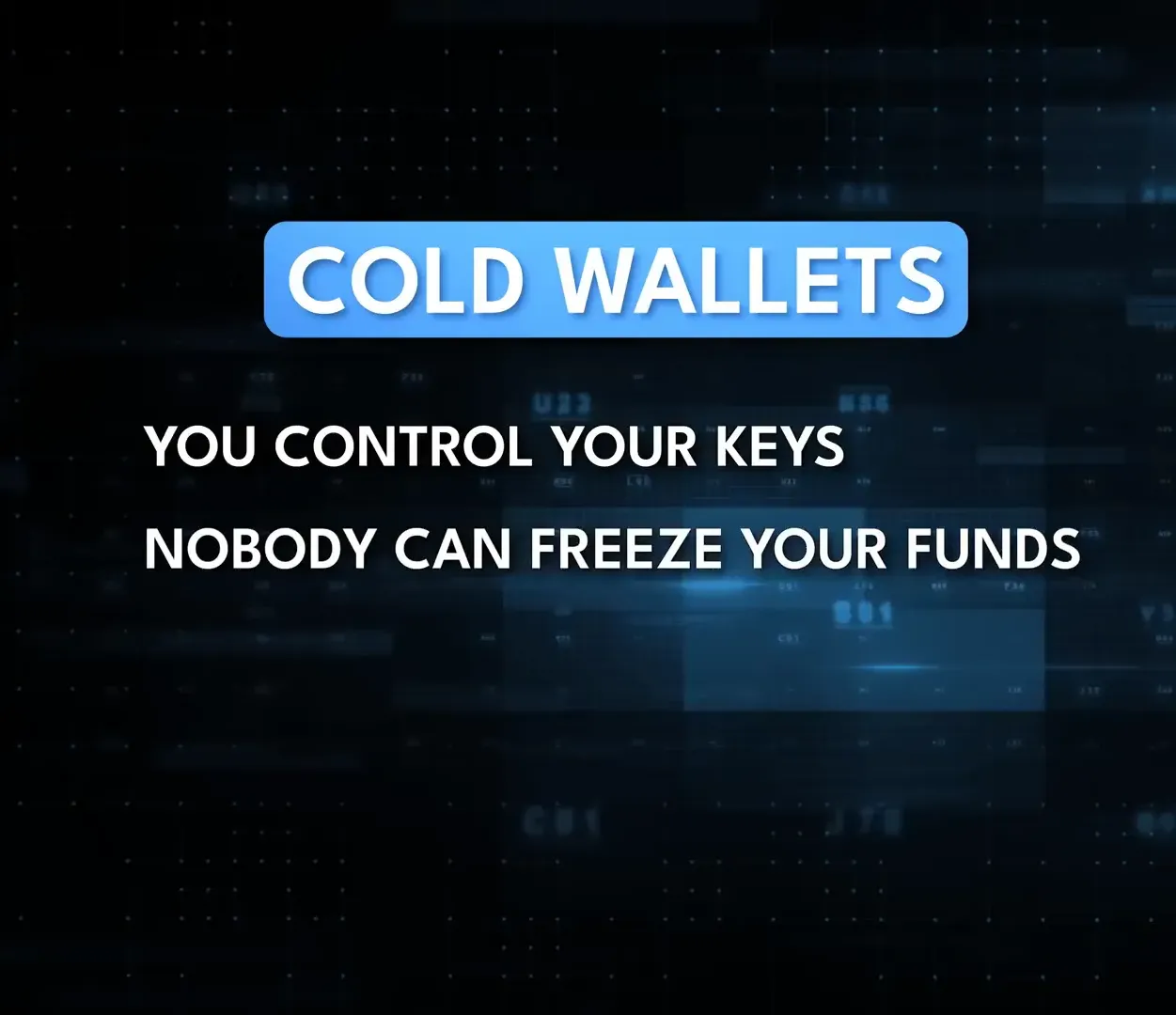
Lesson 7: Operational Security Determines If You Keep or Lose Your Crypto
Even with the most secure cold wallet, you can still lose your crypto through operational mistakes. One common risk is signing malicious spend approvals when interacting with decentralized applications (dApps).
A spend approval is a smart contract that authorizes a dApp to spend a certain amount of crypto from your wallet. While normally safe, if you approve a malicious contract, you could unknowingly give scammers access to your funds.
To stay safe:
- Never connect your main cold wallet to websites for signing approvals.
- Use a hot wallet with only the funds needed for transactions when interacting with dApps.
If you suspect you’ve signed malicious approvals, you can either move your crypto to a fresh wallet or revoke permissions using tools like revoke.cash, which lets you review and cancel spend approvals for free (aside from small blockchain fees).
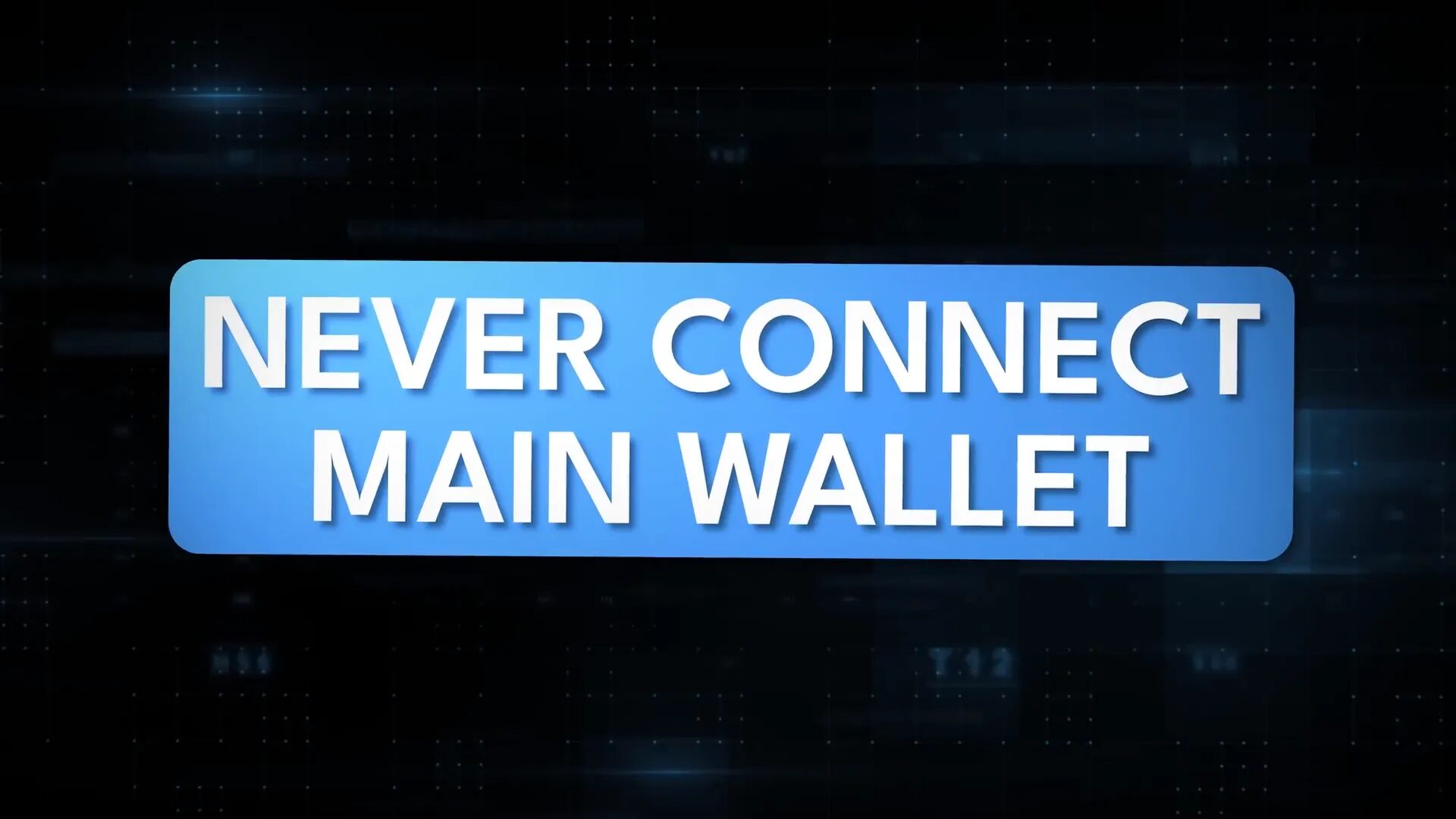
Lesson 8: Crypto Is Littered with Fees
Almost every crypto transaction comes with fees—knowing about them ahead of time helps you plan and avoid surprises.
Blockchain Fees (Gas Fees)
Each blockchain charges network fees to process transactions. Less efficient blockchains like Bitcoin and Ethereum tend to have higher fees, especially during busy periods. For example, Ethereum gas fees once averaged $150 during peak NFT trading frenzy in 2021.
Currently, fees on Bitcoin and Ethereum range between $1 and $5 when network traffic is low. These fees go to node operators who validate transactions and secure the network.
For lower fees, consider efficient blockchains like Solana, where transactions average just a few cents.
Exchange Fees
Centralized exchanges like Coinbase, Binance, or Kraken charge fees for trading. Some use flat fees (1-3% per trade), while others impose maker and taker fees:
- Maker Fee: Charged when you place an order and wait for it to be filled; usually lower.
- Taker Fee: Charged when you execute a trade immediately; generally higher.
These fees typically range from 0.03% to 0.5%, depending on the exchange and trade size.
Slippage
Slippage isn’t a fee but can hurt your returns. It occurs when the price changes between submitting and confirming a transaction. For example, if you buy a token at $1 but the price rises to $1.10 before your transaction completes, you end up paying more and getting less token value.
Slippage is common with fast-moving or low-liquidity tokens and is more prevalent on decentralized exchanges like Uniswap or Jupiter, which have thinner order books compared to centralized exchanges.
Lesson 9: You Don’t Need to Understand Everything to Start
One of the biggest barriers to starting in crypto is feeling overwhelmed by how much there is to learn. I know because I was there too. Many people get stuck in analysis paralysis—asking questions endlessly but never taking the first step.
Crypto can seem complex, especially when dealing with wallets, scams, and transactions. But the reality is, you don’t have to know everything upfront. My advice: stop watching and start doing.
When I began in 2020, I had zero knowledge and limited resources. Most quality content was behind paywalls. I learned by making mistakes and adjusting. This hands-on approach is the fastest way to build understanding and confidence.
If you’re worried about buying the wrong crypto, getting scammed, or storing your assets improperly, focus on learning the basics first and taking small steps. Over time, you’ll gain the skills needed to navigate the space safely.
Conclusion
The world of cryptocurrency is exhilarating but fraught with challenges. By learning the 9 Things I Wish I Knew In Crypto, you can avoid common pitfalls and build a more secure, profitable crypto portfolio.
Remember to:
- Be wary of scams and stick to established tokens.
- Question the motives of crypto influencers.
- Focus your investments on quality projects rather than chasing every new token.
- Remove emotion from your trading with disciplined strategies.
- Understand that market sentiment drives prices more than technology.
- Protect your assets by using cold wallets and avoiding custodial exchanges.
- Practice operational security to prevent theft.
- Account for fees in your investment plans.
- Start small, learn as you go, and don’t let complexity stop you.
With these lessons, your crypto journey can be much smoother and more rewarding. Stay informed, stay cautious, and keep learning.
Frequently Asked Questions (FAQ)
Q1: How can I tell if a cryptocurrency is a scam?
Look for signs like a lack of liquidity, no clear project roadmap, anonymous teams, and suspiciously high initial price pumps often driven by bots. Stick to tokens with established track records and those listed in top rankings like CoinMarketCap’s top 100.
Q2: Are all crypto influencers untrustworthy?
Not all, but many are incentivized to promote projects for payment. Always do your own research instead of blindly trusting influencer recommendations, especially for newly launched tokens.
Q3: Should I invest in many different cryptocurrencies to diversify?
Over-diversifying can dilute gains and increase risk. It’s often better to focus on a few established coins with strong fundamentals and communities.
Q4: What is dollar cost averaging (DCA) and why is it useful?
DCA involves investing a fixed amount regularly over time, reducing the impact of market volatility and emotional decision-making. It helps you get better average prices and reduces stress.
Q5: Why should I use a cold wallet instead of keeping crypto on exchanges?
Cold wallets store your private keys offline, protecting your assets from hacks and exchange freezes. Exchanges control your keys, meaning they can restrict access or lose your funds.
Q6: How do I protect my crypto from being stolen when interacting with decentralized apps?
Never connect your main cold wallet to dApps. Use a separate hot wallet with limited funds for transactions and regularly revoke unnecessary spend approvals using tools like revoke.cash.
Q7: What fees should I expect when trading crypto?
You’ll encounter blockchain network fees (gas), exchange trading fees (maker/taker), and possible slippage. These vary by blockchain, exchange, and token liquidity.
Q8: Do I need to understand everything about crypto before investing?
No. Start small, learn as you go, and take action. Experience is one of the best teachers in the crypto space.


